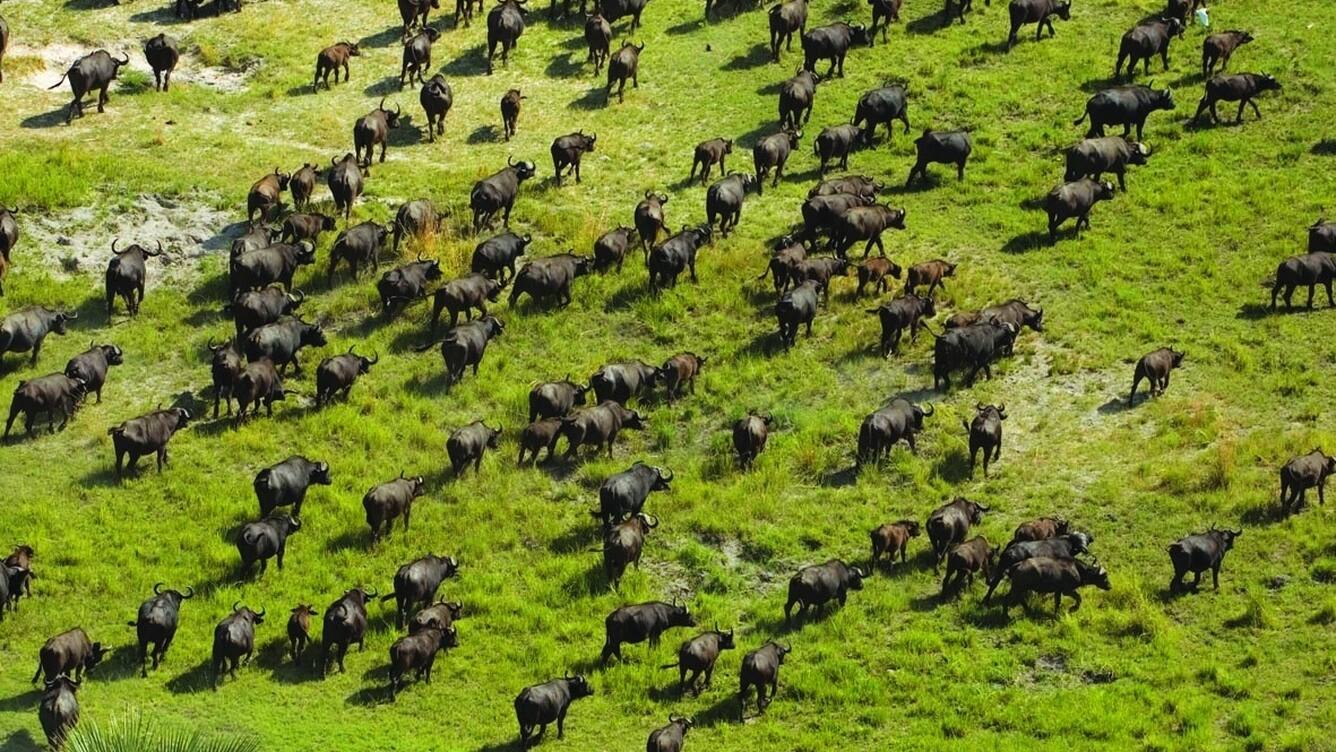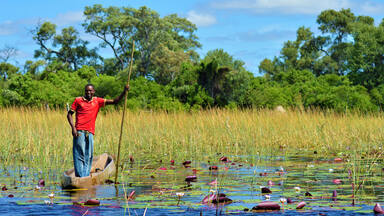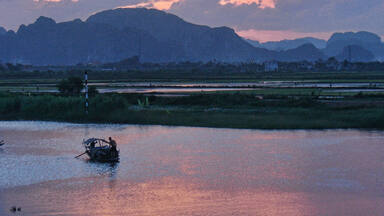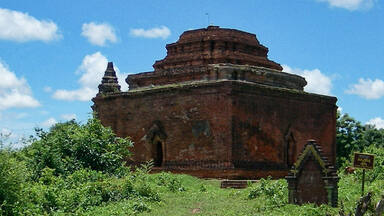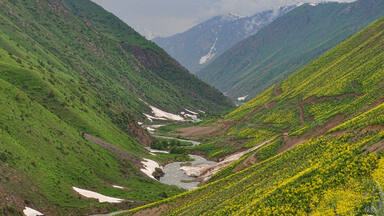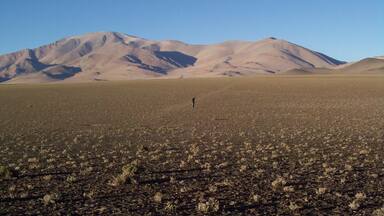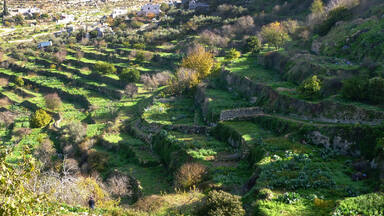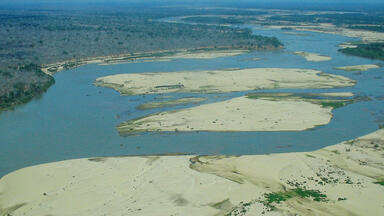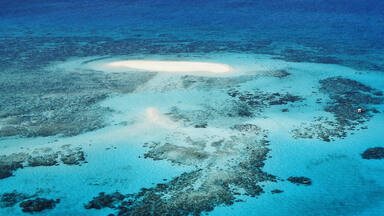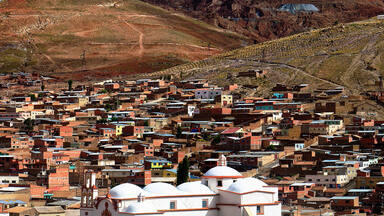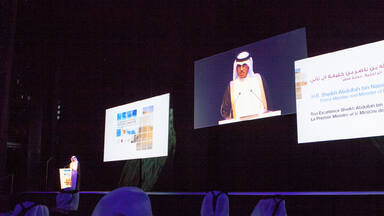World Heritage List reaches 1000 sites with inscription of Okavango Delta in Botswana
Doha, 22 June – Botswana’s Okavango Delta became the 1000th site inscribed on the World Heritage List today. Okavango was inscribed as a natural site by the World Heritage Committee, which is meeting in Doha (Qatar) under the Chair of Sheikha Al Mayassa Bint Hamad Bin Khalifa Al Thani.
The Committee also inscribed sites in France, Israel, Italy,Turkey and the United States thisafternoon. The List now totals 1001 properties. The new sites, are:
Okavango Delta (Botswana). This delta in northwest Botswana comprises permanent marshlands and seasonally flooded plains. It is one of the very few major interior delta systems that do not flow into a sea or ocean, with a wetland system that is almost intact. One of the unique characteristics of the site is that the annual flooding from the river Okavango occurs during the dry season, with the result that the native plants and animals have synchronised their biological cycles with these seasonal rains and floods. It is an exceptional example of the interaction between climatic, hydrological and biological processes. The Okavango delta is home to some of the world’s most endangered species of large mammal, such as the cheetah, white rhinoceros, black rhinoceros, African wild dog and lion.
Decorated Cave of Pont d’Arc, known as Grotte Chauvet-Pont d’Arc, Ardeche (France). Located in a limestone plateau of the Ardeche River in southern France, the property contains the earliest known and best preserved figurative drawings in the world, dating back as early as the Aurignacian period (30,000 to 32,000 BP), making it an exceptional testimony of prehistoric art. The cave was closed off by a rock fall approximately 20,000 years BP and remained sealed until its discovery in 1994, which helped keep it in pristine condition. Over 1,000 images have so far been inventoried on its walls, combining a variety of anthropomorphic and animal motifs. They are of exceptional aesthetic quality, demonstrate a range of techniques, including the skillful use of colour, combinations of paint and engraving, anatomical precision, three-dimensionality and movement. They include several dangerous animal species difficult to observe at that time, such as mammoths, bears, wildcats, rhinos, bison and aurochs, as well as 4,000 inventoried remains of prehistoric fauna, and a variety of human footprints. A replica of the cave is under construction, and is due to open in April 2015.
Caves of Maresha and Bet Guvrin in the Judean Lowlands as a Microcosm of the Land of the Caves (Israel). This “city under a city” is characterized by a selection of man-made caves, excavated from the thick and homogenous layer of soft chalk in Lower Judea. It includes chambers and networks with varied forms and functions, situated below the ancient twin towns of Maresha and Bet Guvrin, that bear witness to a succession of historical periods of excavation and usage stretching over 2,000 years, from the Iron Age to the Crusades, as well as a great variety of subterranean construction methods. The original excavations were quarries, but these were converted for various agricultural and local craft industry purposes, including oil presses, columbaria (dovecotes), stables, underground cisterns and channels, baths, tomb complexes and places of worship , and hiding places during troubled times.
Vineyard Landscape of Piedmont: Langhe-Roero and Monferrato (Italy) covers five distinct wine-growing areas with outstanding landscapes and the Castle of Cavour, an emblematic name both in the development of vineyards and in Italian history. It is located in the southern part of Piedmont, between the Po River and the Ligurian Appenines, and encompasses the whole range of technical and economic processes relating to the winegrowing and wine making that has characterized the region for centuries. Vine pollen has been found in the area dating from the 5th century BC, when Piedmont was a place of contact and trade between the Etruscans and the Celts; Etruscan and Celtic words , particularly wine-related ones, are still found in the local dialect. During the Roman Empire, Pliny the Elder mentions the Piedmont region as being one of the most favourable for growing vines in ancient Italy; Strabo mentions its barrels.
Bursa and Cumalıkızık: The Birth of the Ottoman Empire (Turkey) is a serial nomination of eight component sites in the City of Bursa and the nearby village of Cumalıkızık, in the southern Marmara Region. The site illustrates the creation of an urban and rural system establishing the Ottoman Empire in the early 14th century. The property illustrates key functions of the social and economic organization of the new capital which evolved around a new civic centre. These include commercial districts of khans, kulliyes (religious institutions) integrating mosques, religious schools, public baths and a kitchen for the poor as well as the tomb of Orhan Ghazi, the founder of the Ottoman dynasty. One component outside the historic centre of Bursa is the village of Cumalıkızık, the only rural village of this system to show the provision of hinterland support for the capital.
Pergamon and its Multi-Layered Cultural Landscape (Turkey) rises high above the Bakirçay Plain in Turkey’s Aegean region. The acropolis of Pergamon was the capital of the Hellenistic Attalid Dynasty, a major centre of learning in the ancient world. Monumental temples, theatres, stoa or porticos, gymnasium, altar and library were set into the sloping terrain surrounded by an extensive city wall. The rock-cut Kybele Sanctuary lies to the north-west on another hill visually linked to the acropolis. Later the city became capital of the Roman province of Asia known for its Asclepieion healing centre. The acropolis crowns a landscape containing burial mounds and remains of the Roman, Byzantine and Ottoman empires in and around the modern town of Bergama on the lower slopes.
Monumental earthworks of Poverty Point (United States of America) owes its name to a 19th century plantation close to the site. It is located in the Lower Mississippi Valley on a slightly elevated and narrow landform. The complex comprises five mounds, six concentric semi-elliptical ridges separated by shallow depressions and a central plaza. It was created and used for residential and ceremonial purposes by a society of hunter fisher-gatherers between 3,700 and 3,100 B.C. Research has not clarified yet whether the complex had a steady residential function or was a campground occupied temporarily during ceremonies of trading fairs. It is a remarkable achievement in earthen construction in North America that was not surpassed for at least 2,000 years.
The 38th session of the World Heritage Committee began on 15 June and will continue through to 25 June.
Documents
UNESCO Media Contact in Doha
Sue Williams,
+33(0)6 15 92 93 62 or +974 503 16609
s.williams@unesco.org
Follow @UNESCO on Twitter using the hashtag #WorldHeritage
Follow us on Facebook
